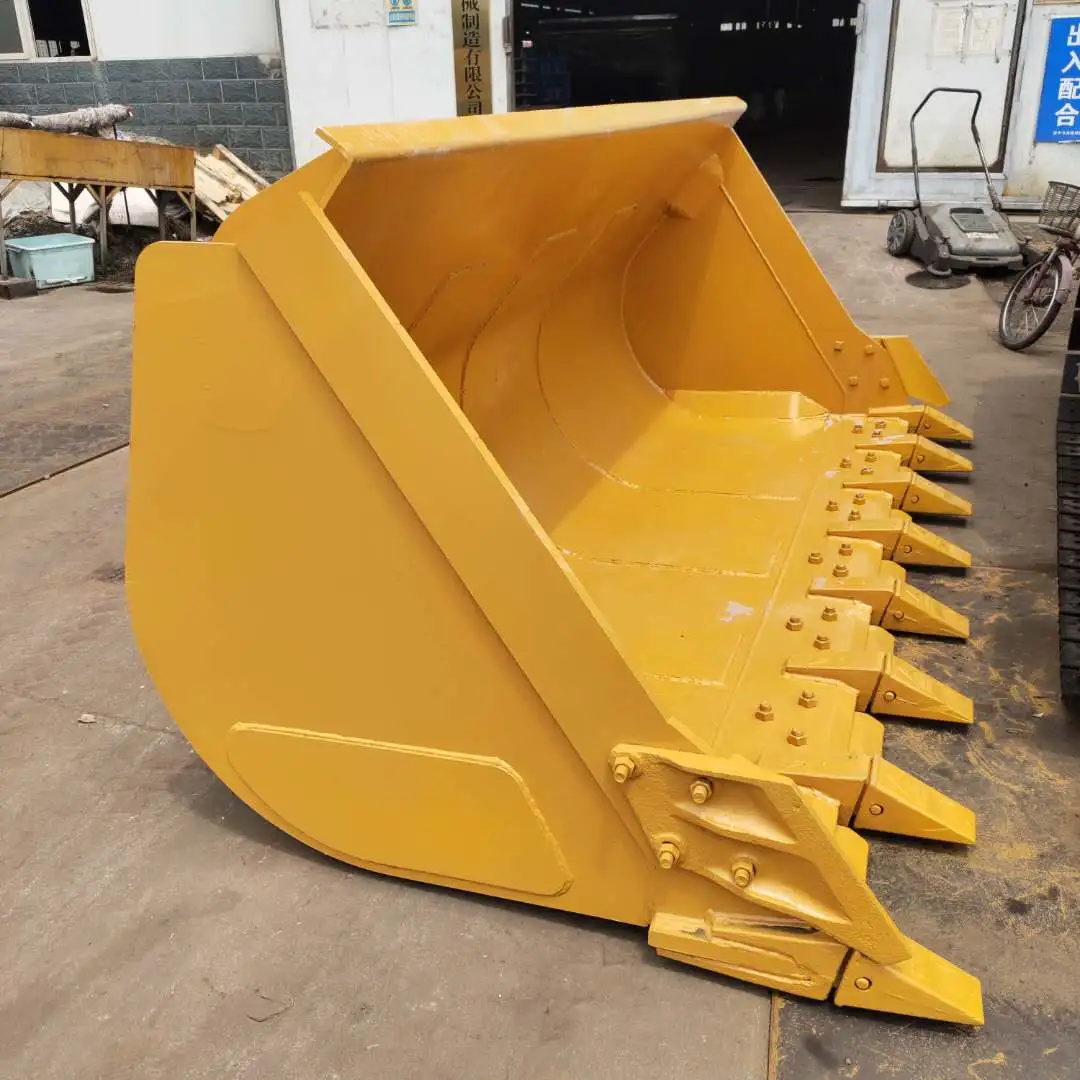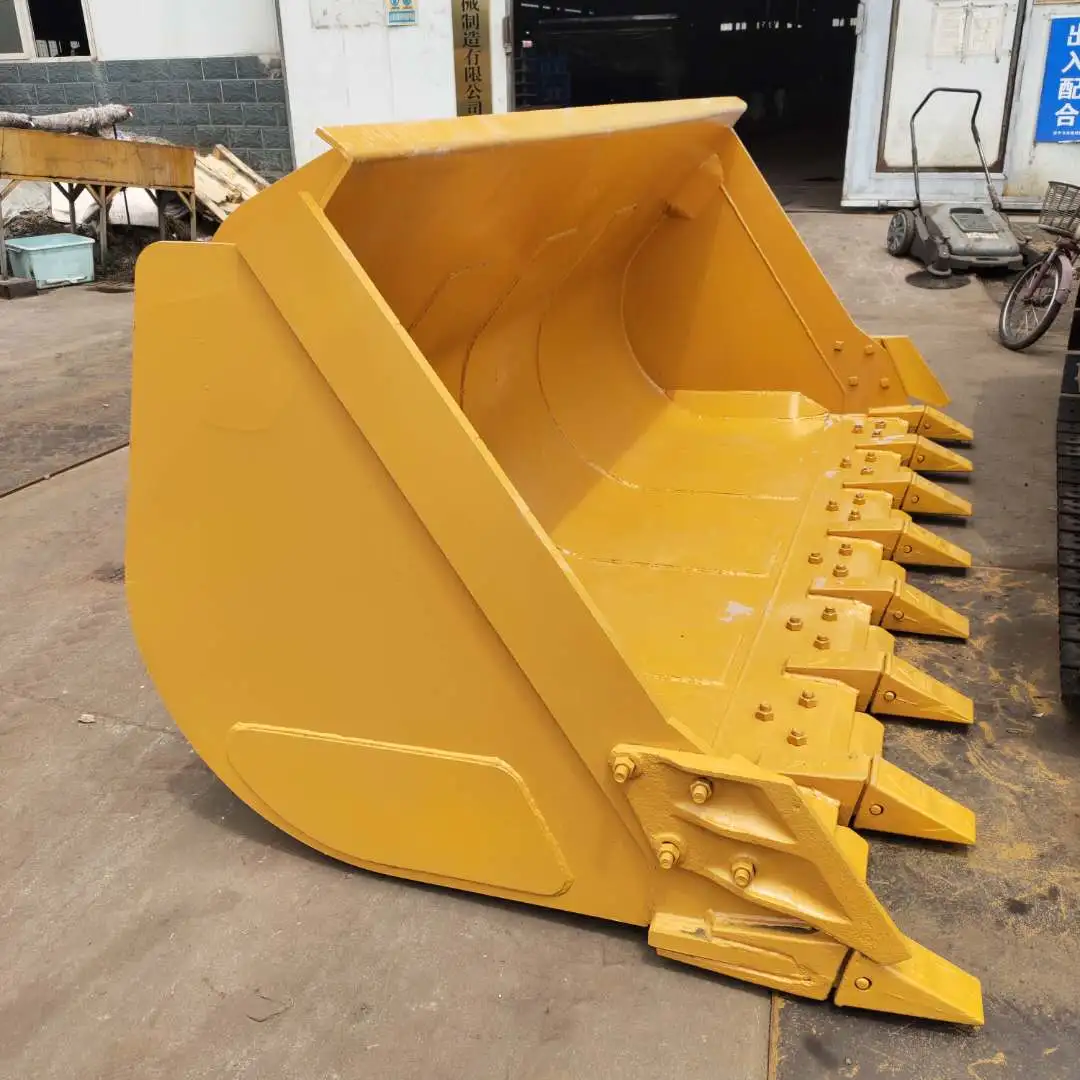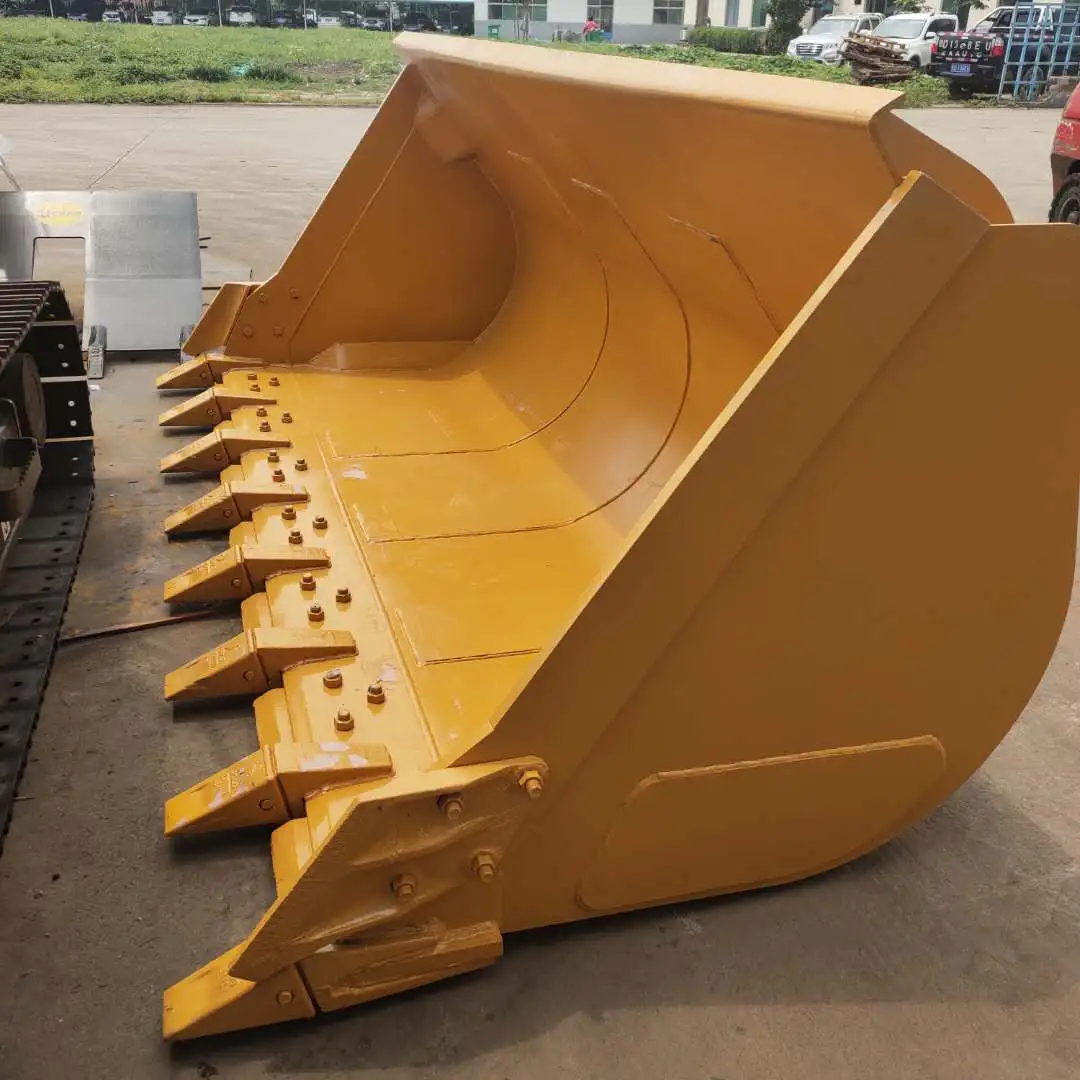Front Loader Bucket vs Skid Steer Bucket
When it comes to choosing the right equipment for your construction or earthmoving project, understanding the differences between a front loader bucket and a skid steer bucket is crucial. These two attachments may seem similar at first glance, but they serve distinct purposes and excel in different work environments. The bucket, typically attached to a wheel loader, is designed for handling larger volumes of material and excels in open spaces. On the other hand, the skid steer bucket, mounted on a compact and agile skid steer loader, shines in confined areas where maneuverability is key. Let's dive deeper into the unique characteristics and applications of each to help you make an informed decision for your next project.
Definition & Host Machine
Front Loader Bucket: Versatile Attachment for Wheel Loaders
A front loader bucket is a large, heavy-duty attachment designed specifically for wheel loaders. These buckets are engineered to handle substantial volumes of material, making them ideal for tasks such as loading trucks, moving earth, and handling aggregate materials. The front loader bucket's size and capacity are matched to the power and lifting capabilities of wheel loaders, which are typically larger machines with impressive hydraulic systems.
Wheel loaders, the host machines for front loader buckets, are known for their strength and stability. They feature a distinctive articulated steering system that allows for smooth operation even when carrying heavy loads. This design enables operators to maintain good visibility and control while maneuvering large quantities of material.
Skid Steer Bucket: Compact Powerhouse for Skid Steers
In contrast, a skid steer bucket is a smaller, more compact attachment designed for use with skid steer loaders. These buckets are built to complement the agility and versatility of skid steers, which are known for their ability to turn within their own footprint. Skid steer buckets come in various sizes and configurations to suit different tasks, from general-purpose material handling to specialized applications like snow removal or light excavation.
Skid steer loaders, the machines that utilize these buckets, are compact and highly maneuverable. They operate using a unique steering system where the wheels on each side can be driven independently, allowing for extremely tight turns and precise positioning in confined spaces.
Key Differences in Host Machine Capabilities
The primary distinction between wheel loaders and skid steers lies in their size, power, and operational characteristics. Wheel loaders are larger, more powerful, and better suited for open areas and high-volume material handling. They excel in tasks that require moving large amounts of material over longer distances.
Skid steers, being smaller and more agile, are perfect for jobs in tight spaces or where frequent direction changes are necessary. They're versatile machines that can perform a wide range of tasks beyond just material handling, thanks to their ability to use various attachments.
These differences in host machines directly impact the design and capabilities of their respective buckets, influencing factors such as capacity, lifting height, and overall performance in different work scenarios.

Design & Structural Features
Front Loader Bucket: Engineered for Heavy-Duty Performance
The design of a front loader bucket is tailored for robust performance and high-volume material handling. These buckets are typically wider and deeper than their skid steer counterparts, allowing them to scoop and carry larger loads. The bucket's shape is optimized for efficient penetration into material piles and smooth dumping action.
Key structural features of front-loader buckets include:
- Reinforced edges and wear plates to withstand the stress of heavy loads and abrasive materials
- A curved design that facilitates material retention during transport
- Strong, welded construction to handle the forces exerted by powerful wheel loaders
- Optional features like teeth or bolt-on cutting edges for improved digging performance
The attachment system for front loader buckets is designed to handle substantial weights and provide a secure connection to the wheel loader's arms. This often involves a hydraulic quick-attach system, allowing for rapid bucket changes when needed.
Skid Steer Bucket: Optimized for Maneuverability
Skid steer buckets are designed with a focus on versatility and agility. Their compact size and lighter weight complement the nimble nature of skid steer loaders. These buckets are typically shorter in width and height compared to front loader buckets, allowing them to access tighter spaces.
Notable design elements of skid steer buckets include:
- A more vertical back plate to maximize capacity within a smaller footprint
- Reinforced corners to withstand the frequent direction changes typical of skid steer operation
- Optional low-profile designs for improved visibility
- Compatibility with various skid steer models through standardized mounting plates
The attachment mechanism for skid steer buckets is often a universal quick-attach system, enabling operators to switch between different attachments quickly and easily. This versatility is a hallmark of skid steer operations.
Comparative Analysis of Bucket Capacities and Dimensions
When comparing front loader buckets to skid steer buckets, the differences in capacity and dimensions are significant:
- Capacity: Front loader buckets typically range from 2 to 6 cubic yards or more, while skid steer buckets generally hold between 0.5 to 1 cubic yard.
- Width: Front-loader buckets can be 8 to 12 feet wide or more, whereas skid steer buckets usually range from 4 to 8 feet in width.
- Height: The height of front loader buckets is generally greater, allowing for higher dump clearances.
- Weight: Front-loader buckets are substantially heavier, often weighing several thousand pounds, while skid steer buckets typically weigh a few hundred pounds.
These dimensional differences reflect the distinct roles and capabilities of each bucket type, with front loader buckets designed for high-volume operations and skid steer buckets optimized for versatility in confined spaces.

Functional Performance & Work Scenarios
Front Loader Bucket: Excelling in Large-Scale Operations
Front loader buckets shine in scenarios that demand high-volume material handling and efficiency over larger areas. Their performance characteristics make them ideal for:
- Quarry operations: Loading large amounts of aggregate onto trucks or conveyors
- Construction sites: Moving earth, gravel, or debris in bulk quantities
- Snow removal: Clearing large parking lots or roadways quickly
- Waste management: Handling and transferring large volumes of waste materials
The strength of front loader buckets lies in their ability to move significant amounts of material in a single pass, reducing cycle times and increasing overall productivity. Their higher dump height also allows for easy loading of trucks and other high-sided containers.
Skid Steer Bucket: Mastering Tight Spaces and Precision
Skid steer buckets excel in applications that require agility, versatility, and precision. They are particularly well-suited for:
- Landscaping: Precise material placement and grading in confined spaces
- Indoor construction: Handling materials inside buildings or in tight urban environments
- Agriculture: Managing feed, cleaning barns, or handling various farm materials
- Light excavation: Digging trenches or preparing foundations for smaller structures
The compact nature of skid steer buckets allows them to navigate through doorways, between obstacles, and in areas where larger equipment can't access. Their versatility also shines in multi-task environments where frequent attachment changes are necessary.
Industry-Specific Applications: Construction to Landscaping
Both bucket types find extensive use across various industries, each playing to its strengths:
Construction: Front-loader buckets are typically used for bulk earthmoving, site preparation, and loading trucks with large volumes of material. Skid steer buckets handle tasks like backfilling, material distribution in confined areas, and cleanup operations.
Landscaping: While front loader buckets might be used for initial earth moving in larger projects, skid steer buckets dominate in precision work such as grading, placing topsoil, and handling mulch or decorative stone in tight spaces around buildings or landscaping features.
Mining and Quarrying: Front-loader buckets are essential for high-volume material extraction and loading operations. Skid steer buckets might be used for maintenance tasks or in processing areas where space is limited.
Agriculture: Large farms might employ front loader buckets for handling bulk feed or compost. Skid steer buckets are more common in day-to-day operations, moving smaller quantities of materials in and around farm buildings.
Understanding these functional differences and industry-specific applications is crucial for selecting the right bucket for your operational needs, ensuring optimal efficiency and productivity in your projects.

FAQ
Q1: Can I use a front loader bucket on a skid steer?
A1: While it's technically possible to adapt a front loader bucket for a skid steer, it's not recommended. The size, weight, and design of front loader buckets are optimized for larger machines and could overload or destabilize a skid steer, potentially causing safety issues.
Q2: What materials are best suited for each type of bucket?
A2: Front loader buckets excel with heavy, dense materials like rock, gravel, and wet soil in large quantities. Skid steer buckets are versatile and can handle a wide range of materials, from light mulch to moderately heavy aggregate, but in smaller volumes.
Q3: How do maintenance requirements differ between front loader and skid steer buckets?
A3: Front loader buckets often require more robust maintenance due to their size and the loads they handle. This might include more frequent wear plate replacements and weld inspections. Skid steer buckets typically need less intensive maintenance but may require more frequent cleaning due to their use in varied environments.
Q4: Are there specialized buckets available for each machine type?
A4: Yes, both front loaders and skid steers have a range of specialized buckets available. For front loaders, these might include high-capacity light material buckets or rock buckets with reinforced edges. Skid steers offer options like combination buckets, skeleton buckets for sorting materials, or snow buckets for winter maintenance.
Q5: How does the choice between a front loader bucket and a skid steer bucket impact fuel efficiency?
A5: Generally, front loader buckets, being used on larger machines, consume more fuel when operating. However, they can move larger volumes of material, potentially reducing the number of trips required. Skid steer buckets, used on smaller machines, are more fuel-efficient per hour of operation but may require more passes to move the same volume of material.
Front Loader Bucket Manufacturer
Tiannuo Machinery stands at the forefront of construction and earthmoving equipment manufacturing, offering a comprehensive range of high-quality attachments and modifications. Our expertise extends from railway maintenance equipment to specialized excavator accessories, ensuring we meet diverse industry needs. We take pride in our buckets, engineered for optimal performance and durability. These buckets boast impressive capacities, with designs tailored to enhance loading efficiency and material handling across various applications. Our commitment to innovation is reflected in features like wear-resistant steel composition and hydraulic quick-attach systems, maximizing operational efficiency and equipment longevity. For those seeking reliable, high-performance front loader buckets or other specialized construction equipment, we invite you to explore our offerings and contact us at raymiao@stnd-machinery.com. Let Tiannuo Machinery be your partner in elevating your project's capabilities and productivity.
References
- Construction Equipment Guide: Wheel Loaders vs. Skid Steers
- TianNuo Machinery: Excavator Attachments Catalog
- Heavy Equipment Forums: Bucket Selection Guide
- Journal of Construction Engineering: Loader Efficiency Studies
- Equipment World: Trends in Construction Machinery
- American Society of Civil Engineers: Earthmoving Equipment Standards
About Author: Arm
Arm is a leading expert in the field of specialized construction and railway maintenance equipment, working at Tiannuo Company.

